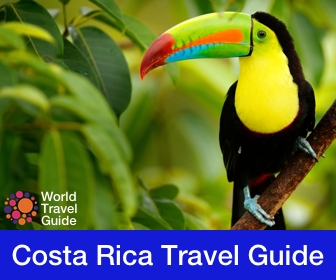How To Get Around In Puerto Rico
Getting Around Puerto Rico
Air
Vieques Air-Link (www.viequesairlink.com) and Cape Air (www.capeair.com) provide domestic air travel within Puerto Rico. Flying is a fast, convenient way to travel between mainland Puerto Rico and the outlying islands of Culebra and Vieques, though there is also a reliable, cheaper ferry service. Flight times vary by season. Booking in advance is recommended, regardless of your method of transportation.
Departure tax
None.
Road
Puerto Rico has devoted considerable resources to building its road infrastructure, and the main cities are well connected by a modern highway system. Be prepared with coins or small bills for tolls. Unlike the mainland USA, Puerto Rico sells petrol in litres. Distance may be demarcated in kilometres or in miles depending on the area.
Side of the road
RightRoad Quality
The quality of highways is generally good; the same is true of local roads in major cities. Roads on the island's interior vary greatly in quality and safety, as well as in lighting; it is not advised to drive at night. Generally, traffic is heavy (the island has 4 million people and more than 2 million cars) and many visitors prefer not to drive.
Road Classification
Puerto Rico's major highways are numbered 2, 3, and 52.
Car Hire
International and local firms are available at the airport and city agencies. Most car hire agencies require that renters be 25 years of age or older. Some companies rent to people aged 21-24, but impose a daily surcharge and/or require that a licensed driver aged 25 or older accompany him/her for the duration of the rental. It's best to check the policies of the specific agency from which you wish to rent a car before arriving on the island.
Taxi
Taxis are readily available in San Juan; you can hire them at the airport, hotels and major tourist sites, or hail them on the street. Be sure to ask whether the driver is charging a set rate (and what the rate is) or using a meter. In other cities, you usually need to call a taxi. Taxi safety varies considerably; not all vehicles are new, nor do all taxis have seat belts. Taxi drivers expect a 15% tip.
Bike
Cycling is increasingly popular in Puerto Rico, but is not recommended for visitors due to heavy car traffic, aggressive driving, and narrow roadways that make cycling dangerous.
Coach
There is no commercial coach service available for travel between cities. Charter coach service for groups is available through Gray Line (tel: +1 800 472 9546; www.grayline.com).
Regulations
Most of the USA's driving laws are observed in Puerto Rico. For local laws, check the Puerto Rico Department of Transportation's website (www.dtop.gov.pr). Speed limits vary by type and condition of roadway. All major roadways have signage indicating the speed limit.
Breakdown services
AAA members can request roadside assistance by calling +1 800 222 4357 and giving their membership number. Otherwise, your car hire company should be able to pick you up in the event of a breakdown; be sure to ask when renting if breakdown service is available 24 hours a day and, if driving outside the capital, how far service extends.
Documentation
US or foreign licences are accepted for 120 days, after which a Puerto Rican licence is required.
Urban travel
San Juan has local bus services (guaguas). Públicos (share-taxis) have 'P' or 'PD' at the end of licence plate numbers and run regular routes between established points. They usually operate only during daylight hours and depart from the main plaza (central square) of a town. Públicos must be insured by law and the Public Service Commission fixes their routes and reasonable rates.
Rail
There is no rail service between cities. The Tren Urbano (www.dtop.gov.pr) is a public train service in the San Juan metro area; however, it is not convenient and is not used frequently by locals or visitors.
Rail Passes
One-, seven-, 30-, and 90-day passes are available on San Juan's Tren Urbano.
Water
There is a ferry service between Old San Juan and Cataño (home to the Bacardi rum factory) and between Old San Juan and the neighbourhood of Hato Rey (home to the Plaza las Americas shopping mall). Check the ferry terminal in Old San Juan for current schedules.
The Puerto Rico Department of Transportation's Maritime Transport Authority or ATM (www.dtop.gov.pr) runs ferries between mainland Puerto Rico and the islands of Vieques and Culebra. All ferries to the sister islands depart from the port of Fajardo. Schedules are notoriously erratic and services can be cancelled without notice. It is important to distinguish that ATM operates two different types of service. The 'ferry' is a cargo vessel that transports cars, while the 'lancha' is a passenger vessel; you should make it clear you want a ticket for the lancha. No hire cars can go over on the ferry.

How To Get Around In Puerto Rico
Source: https://www.worldtravelguide.net/guides/caribbean/puerto-rico/getting-around/
Posted by: fraziertherrudy.blogspot.com

0 Response to "How To Get Around In Puerto Rico"
Post a Comment